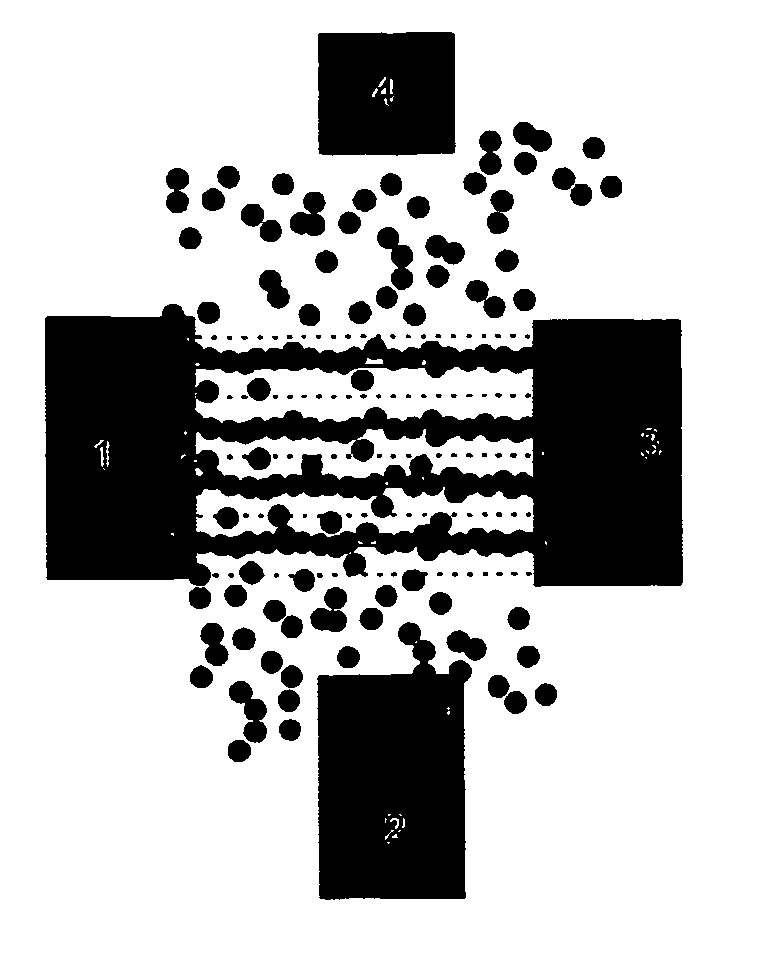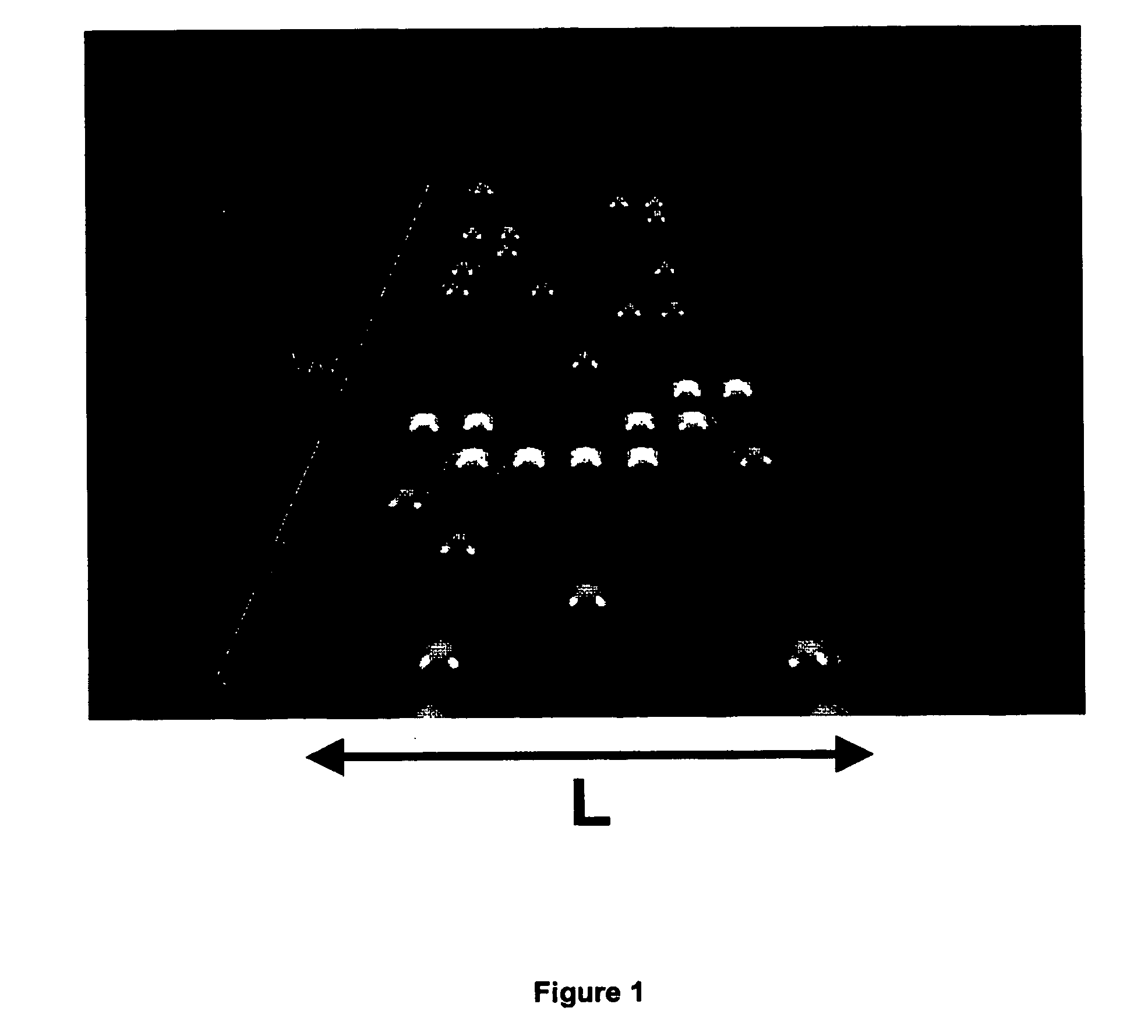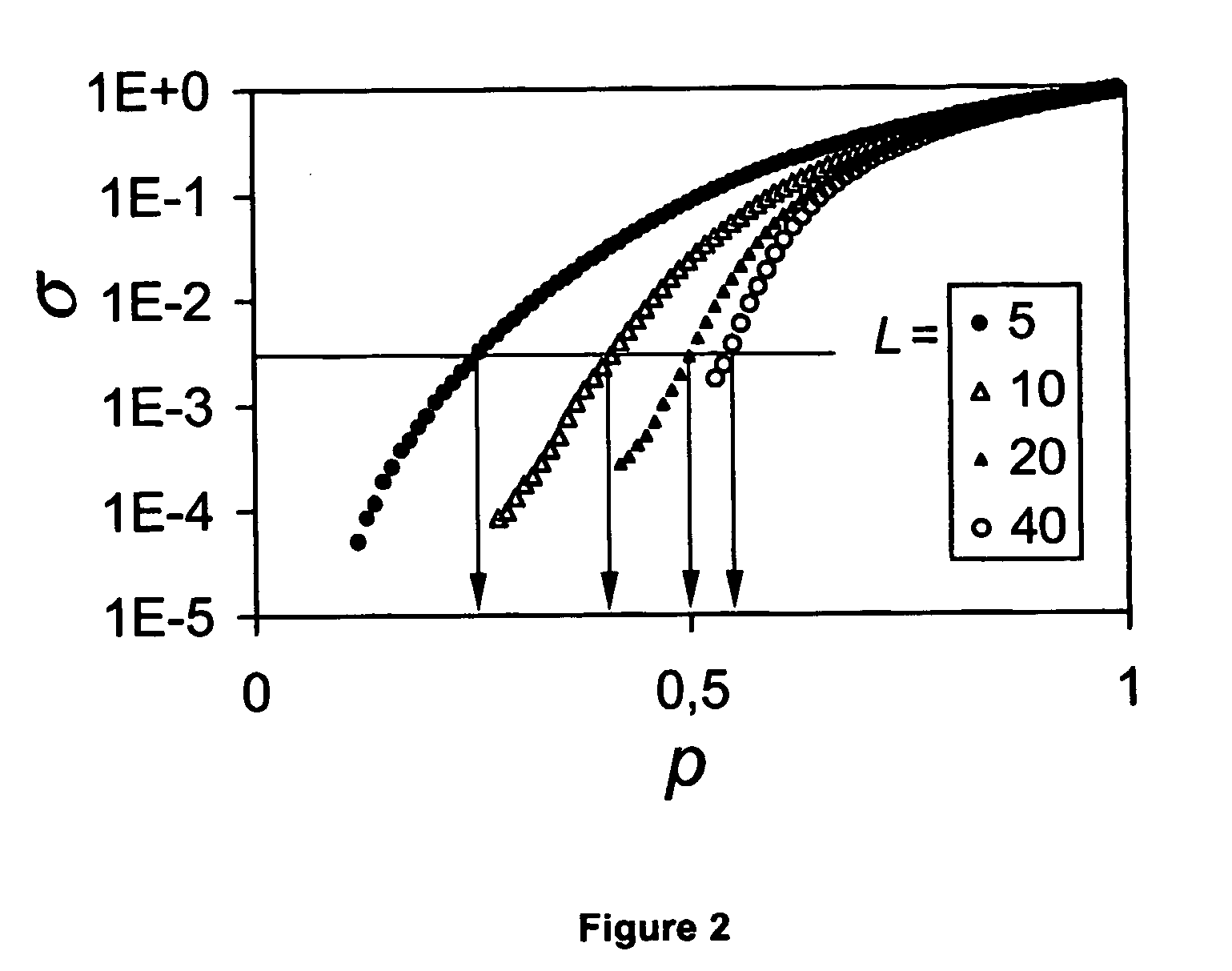Nanoscale electronic devices & frabrication methods
a technology of electronic devices and nano-scale structures, applied in the direction of nanoinformatics, conductors, insulating supports, etc., can solve the problems of long time periods, difficult, and expensive to assemble building blocks, and prevent widespread commercial us
- Summary
- Abstract
- Description
- Claims
- Application Information
AI Technical Summary
Benefits of technology
Problems solved by technology
Method used
Image
Examples
examples
The invention is further illustrated by the following examples:
1. Lithography Processes
A combination of optical and Electron Beam Lithography has been used. The first technique defines macroscopic bonding pads with a moderate separation of about 40 microns. Subsequently, EBL defines the fine structure of the two contacts. For optical microscope pictures of fabricated contacts see FIG. 4.
(a) Cleaving and Cleaning of the Substrate
The substrates for the contacts are flat, square silicon pieces cut out of a standard 0.55 mm thick wafer with a 200 nm Silicon-nitride layer on top to provide a virtually non-conducting and very flat surface.
After cutting the wafer into pieces of the required size, the substrates are cleaned. That is achieved by rinsing them first in Acetone then Methanol and finally IPA making intensive use of the ultrasonic bath. After the IPA the substrates are blown dry with N2 and baked at 95 degrees Celsius for about 15 minutes before further processing.
(b...
PUM
| Property | Measurement | Unit |
|---|---|---|
| distance | aaaaa | aaaaa |
| distance | aaaaa | aaaaa |
| distance | aaaaa | aaaaa |
Abstract
Description
Claims
Application Information
 Login to View More
Login to View More - R&D
- Intellectual Property
- Life Sciences
- Materials
- Tech Scout
- Unparalleled Data Quality
- Higher Quality Content
- 60% Fewer Hallucinations
Browse by: Latest US Patents, China's latest patents, Technical Efficacy Thesaurus, Application Domain, Technology Topic, Popular Technical Reports.
© 2025 PatSnap. All rights reserved.Legal|Privacy policy|Modern Slavery Act Transparency Statement|Sitemap|About US| Contact US: help@patsnap.com



